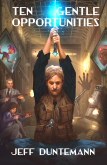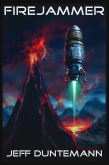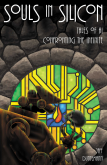- Take a look at Visuino, which is a visual development environment for the Arduino embedded processor family. This is a beautiful thing, and makes me wish I still ran a certain magazine.
- And there’s a new default OS for the Raspberry Pi 2 and 3. (Don’t try it on the earlier boards, nor the Pi Zero.) Looks good from here, and my RPi 3 will get the treatment as time allows.
- 75 years ago, there was a butt-kicking geomagnetic storm. Not exactly Carrington, but it makes me wonder how our infinitely more electronic culture would respond to such a storm today.
- Chemporn: How sodium and other twitchy elements burn.
- As of today, there are no Obamacare individual policies available in Maricopa County, Arizona. None. Granted, open enrollment does not begin until November 1, but we qualify to purchase because we’re moving interstate. Arizona officials are still reviewing a proposal from Centene to offer an HMO here, and if approved, it would be the only plan available in this county. This is not a robust healthcare marketplace. This is a law that has already imploded.
- More evidence? Here’s the firehose.
- Implosions, anybody? Great rant about the ongoing imposion of the media elite.
- Low testosterone appears to predispose men to dementia. It’s unclear (and no longer automatically asserted) that high testosterone predisposes men to prostate cancer. (Thanks to Glenn Reynolds for the link.)
- There is a very nice online PDF calendar generator that will create a calendar in PDF format for any string of months you might want. (The site has much else worth exploring related to calendrics.) You can add in holidays, solstices/equinoxes, phases of the moon, and so on. This pretty much makes my 1999 copy of Calendar Creator…useless. (Thanks to reader Spook for the link.)
- How The Atlantic explains Donald Trump: The media takes him literally but not seriously, and his fans take him seriously but not literally. This may in fact explain a great deal.
October, 2016:
Odd Lots
Using Ancient Software Under Win7
I had a need to print out a few calendar pages today, and after thinking about it for a second, I realized that there was a calendar program of some sort on a pile of ancient CDs in the closet that I had not yet dumped. I had actually thrown out a lot of CDs already because they failed to run under Win7, including a few things that I had sorely missed at upgrade time, like the software that came with two of my three scanners. (Thanks to God and all the fates that there is a VueScan X64 that understands both scanners.)
I dug in a box and there it was: Broderbund’s Calendar Creator 7, copyright 1999. It indicated that the software was for Win9x and NT4. I never remember installing it, and honestly don’t recall how it came to me. I have accepted dead or dying computers from other people who had no idea where to take them and didn’t want to just put them out on the curb. Some of these machines came with cardboard boxes full of odd and often broken stuff, with an alluvial layer of software CDs on the bottom. I’m guessing that this was one of them.
So hey, wotthehell: I popped it into my Core 2 Duo/Win7 lab machine, fully expecting it to fail to either install, run, or both. It installed. And it ran.
Once.
However, during its first run it actually created a calendar for me, and printed several pages as a test. I edited the page layout a litle bit and printed the three months that I needed. Then I closed the program and went on to other things. A couple of hours later I realized I needed one more month, but when I tried to run it again, it croaked.
I would have shrugged and tossed it, except that it did run once, launched by the installer as soon as the installer had finished with it. Hmmm. Since installers have to have admin permissions to do their jobs, this made a certain amount of sense, and suggested that if I could run the app as admin, it should work. I gave it admin permissions. It worked.
The 16-bit colors look a little weird, but it runs full-screen at 1600 X 1200 with only one glitch: Print preview doesn’t quite reflect reality. Screens that big didn’t exist in 1999, so I can forgive it that much. It did the job I needed, didn’t cost anything, and as best I can tell didn’t mess anything else up. (That’s not universal, and it’s why I always install things first on a lab machine or a VM. At least do a restore point before you install weird stuff like this.)
If you ever find yourself in this situation, here’s how you run old software as admin:
- Right-click the shortcut to get the context menu.
- Select Properties.
- On the Shortcut Properties dialog, select the Shortcut tab.
- Click the Advanced button.
- Check the “Run as administrator” checkbox.
- Click OK.
Keep in mind that not all ancient software will be this cooperative. A lot of old stuff won’t run at all, or even install. However, it’s useful to try running it as admin before you flip the CD into the trash.
I may still go looking for a modern calendar program. However, it was a good memory jogger, and made me acknowledge that whoever wrote that thing did a very good job of anticipating the future. This is not universal programmer behavior, trust me, and I am not exempt: A DOS program listing utility I wrote in Turbo Pascal in 1985 or so would run in a DOS box in NT4 and Win2K…but after 1999 passed into history, it labeled the printouts as occurring in the year 19100. So it goes.
Review: Junk Box Arduino
Junk Box Arduino appeared earlier this summer from Jim Strickland, and I’ve been dipping into it gradually as time allows. In case you’re TL’DRing on me, I’ll give you the money quote: This is in fact the Assembly Language Step-By-Step of Arduino-based electronic tinkering. I’m a good test case: I’m passionate about electronics (some of you have seen my junkbox, which now fills one smallish garage and our repurposed tack house) and I have an Arduino board on my Heathkit ET-3200 logic breadboard box. Decades ago I did some modest embedded work with the RCA COSMAC CPU line, the most important of which was my robot, Cosmo Klein. Before that I did a lot of things with CMOS and TTL, using Don Lancaster’s books as guides.
Jim’s book is how you begin with Arduino if you have some grasp of computing (as most people do these days) but not electronics. And the book is the polar opposite of academic electronics texts with lots of equations but few photos and nothing at all in terms of bench smarts. The grit and grime of practical electronics is everywhere here: This is the first electonics book I’ve ever seen with warnings like jumper cables wear out. They do, and trying to troubleshoot a visually intact but electrically open jumper is a circle of Hell that I’ve visited more than once, in both digital and RF electronics.
Junk Box Arduino goes all the way down to the (literal) metal, and explains how to build an Arduino-compatible circuit right on a broadboard block. You don’t buy a Cestino board; Cestino (which is Italian for “recycle bin”) isn’t a board, but rather an original design from Jim that you wire up yourself out of loose parts, including an ATmega 1284P CPU chip and a 20 MHz can oscillator. Building the Cestino is in fact the first electronics lesson in the book, with Ohm’s Law looming large. The second lesson is building your own in-system programmer (ISP) so you can program the ATmega chip’s bootloader yourself. No, this isn’t a waste of time. Once you build your own ISP you will know how an ISP works, and teaching you how things work is Jim’s mission throughout the book.
The projects run from the simple and obvious (but still necessary) things like flashing an LED all the way up to highly sophisticated circuits like an ATA disk device reader, a Flash programmer, and even a Z80 CPU lashup that teaches how CPUs and memory work by letting the Cestino control the Z80 and allowing us to look at registers and memory while the Z80 executes slowly or pauses in its tracks. Along the way Jim explains assembly and machine language, object-oriented programming, transistor operation, serial communication, and much else.
Which leads to my only real complaint about the book, which has nothing to do with the writing and may be an old-guy thing: The type is fairly small and there is a great deal of material on the pages. This is really a 600-page book laid out in 400 pages, and I understand why with the sanguine clarity that comes of bloodying your own fingers (which I have) trying to get unit costs on books down.
Don’t let that stop you. The book is a helluva deal for $35 ($22 on Amazon.) It’s one of a bare handful of technical books that I wish I had published back when I was still a publisher. If you have any hopes of making an Arduino control anything electronic, this is a must-have. Highly recommended.
Doing the Numbers on CreateSpace POD
I’m hard at work on a print edition of Ten Gentle Opportunities. Several people have asked for one, and it’s something I’ve been meaning to do for the last six months or so. On the surface it’s easy enough; I’ve done many print books in the past. This time I got seriously tangled up in a critical issue: How many words should I attempt to put on a page?
It’s a critical issue that doesn’t come up at all in ebook layout, where fixed-length pages don’t really exist. (That is, unless you’re distributing PDF files, which almost no one does for fiction anymore.) The problem is that there is a fixed cost per page for POD books, so the bigger the type, the greater the page count, the higher the unit cost, and the smaller your profit margins. The page shown above may look dense, but it’s about par for trade paperback fiction from traditional publishing houses. Bigger type or greater leading would mean a longer book and a higher unit cost. In this entry I’ll try and explain how that calculation is done and what it means to your bottom line.
I’m not done with the layout yet, but a castoff (length projection) falls somewhere close to 300-310 pages. Unit costs add up this way: CreateSpace (Amazon’s POD division) charges $0.012 per page, plus $0.85 per copy, making the unit cost $4.57 for a 310-page book. As best I know, the unit cost doesn’t vary depending on the page size. More on this later.
Now, that’s just for the unit cost. There’s another factor that isn’t present in all POD systems, particularly Lulu.com, where most of my POD titles are currently hosted. This is the sales channel charge, which amounts to Amazon’s profit margin on the title. Adding to the confusion is that there are two different percentages for the sales channel charge, depending on how the customer ordered the POD book:
- When customers order the book through Amazon.com, the charge is 40% of cover price.
- When customers order the book through the CreateSpace e-store, the charge is 20% of cover price.
The CreateSpace e-store provides a page for each book. You basically earn the smaller sales channel percentage by driving buyer traffic to the book’s link on the e-store. I’ve never tried this so I don’t know how many sales I can steer to the e-store. I guess I’ll soon find out.
In terms of knowing how much you earn for each copy, then, you need to set a cover price and then calculate the channel sales charge for Amazon vs. the CreateSpace e-store. Let’s use $12.99 as a cover price example here:
- For Amazon, you multiply 12.99 X 0.4 = $5.20. Knock $5.20 off the cover price and you get $7.79. Out of that value comes the unit cost of the book: $7.99 – $4.57 = $3.22 as the money you clear on each sale.
- For the e-store, you multiply $12.99 X 0.2 = $2.60. Knock $2.60 off the cover price and you get $10.39. Subtract the unit cost of the book: $10.39 – $4.57 = $5.82 as the money you clear on each sale.
You don’t have to do the math manually like this; CreateSpace has an online calculator. I just wanted to show you how the calculation works.
That’s a significant difference, and my guess is that Amazon is trying to provide an incentive for actively marketing your POD books. Keep in mind that you don’t choose one sales channel or the other. Your book is present on both stores at the outset, and your sales will be a mix of both. Your challenge is to get as many people as possible to order through the CreateSpace e-store.
The other way to boost your royalty value is to use a larger trim size. I’m laying the book out as a 6″ X 9″ trade book because that’s a very common size for fiction and it’s what I’ve used on all my other POD titles. Now, the unit cost doesn’t vary by trim size, but a larger trim size (holding the type size and leading constant) will hold more type per page and thus give you fewer pages and a (slightly) lower unit cost. I played around with this and decided that the minimal difference isn’t worth altering my standard layout template.
You could, of course, raise the cover price. Be careful: Readers who have come to expect ebooks to cost $4 or so might consider $12.99 off-putting. In fact, I consider $12.99 to be something like a maximum for a trade paperback novel by an unknown, and I may drop that to $11.99. Pricing is a black art, alas.
So there it is: You sell a POD novel for $12.99 and you get some mix of $3.22 and $5.82 per sale. That’s modestly more than you’d get for the Kindle ebook version priced at $3.99, and close to what you’d get for the same ebook at $4.99. (I don’t think this is an accident.) Is it worth the trouble? I don’t know. Indie authors I’ve talked to say they like having a physical book to show around, but they really don’t sell many compared to the ebook edition.
I’ll admit: I’m doing it because I enjoy book layout and I’m good at it. The schedule isn’t clear yet. I’m still wrapped up in house issues. (Health insurance too; right now my insurance agent tells me there are no individual policies for sale in Maricopa County, as bonkers as that sounds. There may be some by November. Nobody knows yet.) I’ll certainly launch the print edition here when it happens.
The key point is that if you can’t lay the print edition out yourself, you may lose money on it, and sticking with ebooks could be the most prudent choice financially. Do the math and sleep on it. This can be a very weird business.
On the Cover of the Trolling Stone
Well, we’re big clown hoaxers;
We got loads of coaxers
And they freak everywhere we go:
They freak about noses and they freak about clothes
And they freak when we simply don’t show.
We’re takin’ all kinds of risks
To get arrested and frisked,
But the risk we’ll never know
Is the risk that they’ll hail us
‘Stead of screaming to jail us
On the cover of the Rolling Stone!
Kreepy Klown Kraziness
Attention Mr. & Mrs. America and all the ships at sea! The White House has issued a statement on the Creepy Clown hysteria now gripping the nation. Although the Press Secretary wasn’t sure the President had been briefed on the Clown Crisis, he did say that the White House defers to the FBI on clown issues. A Bay Area paper has an interactive map of clown sightings. Police in Utah have warned the public not to shoot random clowns. (There’s been no mention of polite, orderly, or non-chaotic clowns.) It’s still three weeks to Halloween, and clown costume sales are up 300%.
As Dave Barry used to say (often): I am not making this up.
Ok. I have an interest in scary clowns. I was still in Chicago when John Wayne Gacy AKA Pogo the Clown was strangling teen boys and stuffing them into his crawlspace. In fact, I lived a little less than two miles away from him. (One of Carol’s high school friends lived only three blocks away.) A guy I met once but didn’t know well (he was the friend of a friend) used to go to movies with Gacy, but somehow managed to stay out of the crawlspace. I saw portions of Killer Klowns from Outer Space on TV once, in part because it was filmed in Santa Cruz, California, while Carol and I lived there. I consider It to be Stephen King’s best work; so much so that I’m planning to lampoon ol’ Pennywise in a future Stypek novel.
In 2011, I finally realized a longstanding goal of building a short novel around scary (if not evil) clowns. In Drumlin Circus, circusmaster Bramble Ceglarek has four clowns who are also his bodyguards. In the first chapter we get a very good look at how scary they can be, when they capture an assassin sent by the shadowy Bitspace Institute. The novel can be seen as a sequel to “Drumlin Boiler,” though the only common character is Rosa Louise Kolze, the tweener girl who has a peculiar rapport with the mysterious Thingmaker alien replicators, and the “drumlins” that they produce. It’s available on Kindle for $2.99, and includes a second short Drumlins World novel, On Gossamer Wings, by Jim Strickland. (You can also get a paperback for $11.99.)
So what precisely is going on here? Is it just the latest moral panic? If so, why clowns? Why now? Or is it something entirely different?
There are some theories. One is that our secular society rejects traditional religious images of devils/demons/evil spirits, and somebody had to be the face of Demonic 2.0. Clowns were handy.
Another: Clowns may scare small children because they violate the template of what a human being should look like. We’re hardwired by evolutionary selection to recognize faces (which is why it’s so common to see Jesus’ face in a scorched tortilla, or generic faces in smoke marks on a wall, etc.) and as a consequence we’re repelled by facial deformities. Clown makeup is calculated facial deformity.
Yet another: We’re watching the emergence of an archetype in the collective unconscious. Evil clowns are not a brand-new thing. Pennywise, Stephen King’s evil-incarnate clown from the fifth dimension, got a whole lot of play in the midlate 80s, and started the nasty clown idea on its way to cultural trope. He may in turn have been drawing on “phantom clown” sightings, popularized by Loren Coleman, who wrote several book-length compendia of “unsolved mysteries” and other weirdnesses in the early 1980s. Coleman lent support to the notion that clowns are the new demons, though the whole business (like much else in his books, entertaining though it might be) sounds like a tall tale. He’s on Twitter, and has been covering the clown thing in recent days on his blog. (Coleman figures into this in another, more serious way that I’ll come back to.)
But first, I have a theory of my own: The nature of humor is changing. What most people think of as “clowning” is physical comedy, which goes back to the dawn of time. A lot of physical comedy down through history was hurtful. In our own time, the Three Stooges were considered hilarious, and most of their act was slapping or poking each other in the eyes. Much humor involves pain. “Punch & Judy” goes back to the 17th Century, and a big part of it is Punch slugging people with a club. Tormenting animals (often to death) as entertainment was common in past centuries. A lot of people saw it as funny.
Why? Humor appears to be a coping response to pain and suffering, confusion and disorder. (“Twenty years from now, we’ll all laugh about this.”) At least in the West, we’ve gone to great lengths to minimize pain, suffering, and disorder. At the same time, we’ve achieved near-universal literacy. In consequence, a great deal of humor is now verbal rather than physical, and much of it stems from incongruity and confusion rather than pain.
So the image of guys in exaggerated costumes and facial makeup tearing around being random, honking horns, falling on their faces, and sometimes engaging in sham mayhem among themselves is just not as funny as it used to be. It’s a short tumble from “not funny” to “nasty,” and that’s I think what lies at the core of the fall of clowns from grace.
Now, there’s something else. Loren Coleman published a book in 2004 called The Copycat Effect. It’s not about clowns or Bigfoot or urban legends, but about the media’s ability to take a concept, twist it toward nastiness for maximum effect (“If it bleeds, it leads”) and then be surprised when reports of violence or other crime take on a life of their own, sometimes spawning violence or criminal activity of a similar nature.
I have a hunch that this sort of feedback loop is behind Kreepy Klown Kraziness. The concept has gone pedal-to-the-floor viral, to the point where Penn State students went out on a frenzied nocturnal clown hunt that only lacked torches and pitchforks to be considered a lynch mob. Social networking barely existed when Coleman’s book appeared in 2004. Today, Facebook and Twitter turn the dial up to 11.
Between the transformation of clowns into unfunny secular demons like Pennywise and the amplifying effect of clickbait sites and social media, we find ourselves with a genuine case of national hysteria. It may take some time to burn out, but if #ClownLivesMatter becomes a real thing, the phenomenon may be gone sooner than we think.
In the meantime, leave your rubber nose in a drawer until the heat dies down.














